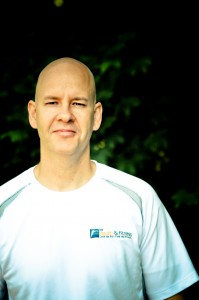Dean Carlson is the director and co-owner of Athletic Revolution NH and Get Fit NH Bootcamp. He is a Certified Professional Fitness Trainer with the National Exercise and Sports Trainers Association, a Level 1 & 2 Youth Conditioning Specialist with the International Youth Conditioning Association and is a Level 1 Certified Precision Nutrition coach. Please visit his websites:
http://AthleticRevolutionNH.com
Assessments. Key To Healthy Athletes and Greater Performance.
One of the biggest challenges that confronts any coach, either skill coaches like most of you reading this, or physical preparation coaches like myself, is helping our athletes reach greater levels of performance while simultaneously working to prevent injury.
We have a saying in our facilities “If you are injured, you can’t train.” While that seems obvious, when it comes right down to it I don’t see enough emphasis being put on injury prevention work. While I realize that injuries can happen, it has been our philosophy that they don’t necessarily have to happen. As soon as we accept injuries are just part of the game, I think we lose focus that there is a lot that can be done to prevent them.
Think about your athletes and what you ask them to go through on a regular basis. A gymnast is asking his or her body to do things repetitively that most people can’t even think about doing. We are creating imbalances every day as part of the routine. Spinning primarily in one direction, creating tremendous distraction forces through the shoulders with the bars, and landings that cause my back to hurt just thinking about them are just a few examples.
So when it comes to these imbalances and the potential injury they can cause, consider:
- How do we know what imbalances are being created?
- How do we “undo” these imbalances?
- How do we know if our corrections are effective?
I would suggest the answer is found in assessing, and re-assessing, our athletes.
I remember the first time I worked with a gymnast. I was stunned that a 12 year old girl could be so graceful, flexible (in certain areas) and strong, and yet so injured at the same time.
Now when I say injured it doesn’t mean that she was in any pain, because at the time she had no symptoms. But when we took a look at her – when we assessed – there were some things happening with her body that we knew we had to address or there was going to be injury down the road.
I’ll give you a couple examples, starting right at the bottom – her feet. She had 0 degrees of dorsiflexion, absolutely none. I could have put a strap and turnbuckle on her leg and foot and that joint wouldn’t have budged. I would suggest that the very nature of the sport, being up on your toes all the time for example, creates this imbalance. The injury challenge it can create happens up the kinetic chain. The ankle joint is designed to be flexible, and when it is not a joint up the chain has to make up for that lack of flexibility. This usually presents at some point in either knee challenges, or as in this case, low back injury.
This young athletes feet were also excessively externally rotated. This is very common in dance athletes as well, and a common cause would be the foot positioning for the Plie in either sport. What shows up in the foot points to something going on in this athletes hip. We need to find out if there is an underlying strength issue, mobility issue or both so we can address the imbalance.
So how do we find out what is going on and what to do about it?
Assess.
Program corrective exercise.
Re-assess.
We can’t assume anything when and athlete walks through the door, either for the first time or for the duration that they are with us.
Each one of our athletes is different. As coaches we need to ask ourselves if what we are doing is enough to keep our athletes healthy and as injury free as we possibly can. Do we want our athletes in physical therapy or do we want them at the gym?
As coaches we are always subjectively assessing our athletes, watching how they are moving, looking for signs that something may not be right. I would suggest that we need some form of objective assessment as well. Good enough usually isn’t.
I would suggest that cookie-cutter programs can work, for a while. But I am betting that if you are reading this you aren’t a cookie-cutter coach.
Yes assessments take time and effort. But the rewards are so worth it:
Healthy, happy and high-performance athletes.
Next time we’ll discuss the assessment process at Athletic Revolution and show you that assessments can be quick, simple and still very effective.
Until then, keep Making It Happen!
